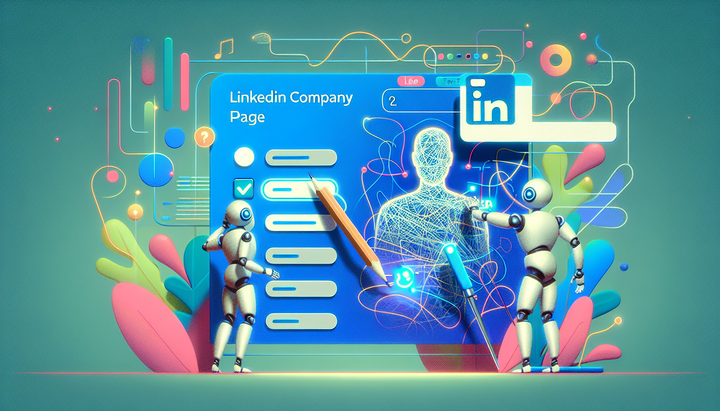The Rise of The Employee Influencer

The lines between personal and professional branding are increasingly blurred.
Companies are not just marketing through their corporate accounts but are leveraging one of their most valuable assets— their employees.
Over the past year, especially as algorithms have changed to amplify individual creators rather than corporate ones, the concept of the ‘employee influencer’ has emerged as a groundbreaking strategy, benefiting both the organisation and its workforce. This approach drives brand recognition and increases organic sharing and referral traffic. Additionally, employees acting as influencers can significantly impact company culture, enhancing the company's image and authenticity.
What is an Employee Influencer?
An employee influencer is an individual within an organisation who, with the help of training and encouragement from their employer, uses their personal social media presence to amplify corporate messages, share insights, and build their professional brand.
Unlike traditional advocacy, which might involve employees sharing company-produced content passively, employee advocacy leverages these influencers to share authentic and trustworthy brand messages. Influencers are proactive, building and engaging with their network effectively and authentically.
With company engagements on the decline, could this be a legitimate strategy for you?
Starting an Employee Influencer Programme - Benefits to the Company and Employee Advocacy
Increased Reach and Authenticity: Personal accounts typically see higher engagement rates than corporate accounts, as content shared by individuals is often perceived as more genuine and trustworthy. When employees share their company’s content, they not only extend its reach but also enhance its authenticity. Influencers, including employees, can help drive brand awareness and sales by expanding the reach and visibility of the brand.
While you cannot “force” an employee to share your content, you can certainly encourage and incentivise them.
Enhanced Employee Engagement: By involving employees in social media strategies and marketing goals, companies can create a deeper connection and commitment to the company’s goals, boosting overall job satisfaction and morale. This involvement also positively impacts the employer brand, attracting and retaining top talent.
Cost-Effectiveness: Not going to lie! Employee influencers are a cost-effective alternative to traditional advertising. The organic reach achieved by engaging employees can reduce the need for paid promotions and advertising.
Benefits to the Employee Influencers
Professional Development: Participating in an employee influencer program involves significant training in communication, social media, and branding. These skills not only aid the company’s marketing efforts but also enhance the employee’s own career development by helping them grow their personal brands.
Clear or renewed sense of professional identity: Before we get to personal branding, which is where we all know this is going, we start with professional identity. Who they think they are and what they do professionally. By taking the time to train and solidify this with the employee, it will give them a grounding and clear sense of self which they will take with them into the employee influencer programme.
Confidence and Personal Branding: Employees gain confidence as they build and refine their professional identities online – it then becomes about personal branding, i.e. How they market themselves after they are clearer in their identity. This personal branding is invaluable as it enhances their visibility and credibility in their professional fields.
Networking Opportunities: Being a well-connected influencer opens doors to new connections, broadening the employee’s professional network and opening up opportunities for career advancement and personal growth. Employees can leverage their own networks to grow their personal brands and access new career opportunities. Nurturing thought leaders within the organization further enhances brand engagement and employee involvement.
How to Implement an Employee Influencer Programme for Brand Recognition
Identifying Potential Influencers: Not every employee will be a fit for the role of an influencer. Companies should identify potential influencers based on their enthusiasm, their role within the company, and their existing online presence and network. They could be in the sales team, marketing team or even the HR team. But whomever they are they will be solid workers with a clear sense of self…and common sense! Setting up a successful employee influencer program involves choosing the right employees, providing them with the necessary tools, and ensuring their success through appropriate communication and support.
Training Programs: Effective training should cover ethical guidelines, content creation, consistency in messaging, and ways to engage professionally on social media platforms.
Here is also the rub…many companies do not have social media policies. And if they do, they tend to be about using social media in a work setting…not necessarily about using social media for work or where they are representing work. It’s a bigrisk area.
Internal influencers, who may not be active publicly but contribute by showing support, giving recognition, sharing knowledge internally, and engaging with colleagues, are also crucial.
Support and Resources: Continuous support is vital. Companies should provide resources like story ideas, templates for banner, regular workshops, and direct access to social media teams to assist employee influencers in their roles.
Challenges and Solutions in Employee Influencer Programs
Addressing Hesitations: Both employees and management may have hesitations. Employees might be concerned about blurring professional and personal boundaries, while management might worry about maintaining message consistency and risks. Clear guidelines and open communication are essential to address these concerns.
Maintaining Authenticity: To avoid the risk of content becoming overly promotional, encourage employees to share their genuine experiences and stories related to their work, rather than simply broadcasting corporate news. If they just post corporate news, people will switch off. This approach helps audiences form opinions about the brand based on authentic and relatable content.
Influencer Marketing: This strategy is a form of influencer marketing, leveraging the unique position of employees to promote brand awareness and drive sales.
Measuring Impact: Establish clear metrics to measure the effectiveness of the employee influencer program. This could include tracking engagement rates, reach, and ultimately sales or leads generated from influencer activities. Use something like Shield to help track your analytics.
The rise of the employee influencer marks a significant shift in how companies approach social media marketing and employee engagement.
In empowering their workforce to serve as brand ambassadors, companies not only expand their reach but also build more authentic and meaningful connections with their audience.
For employees, these programs offer a platform for significant personal and professional growth.



